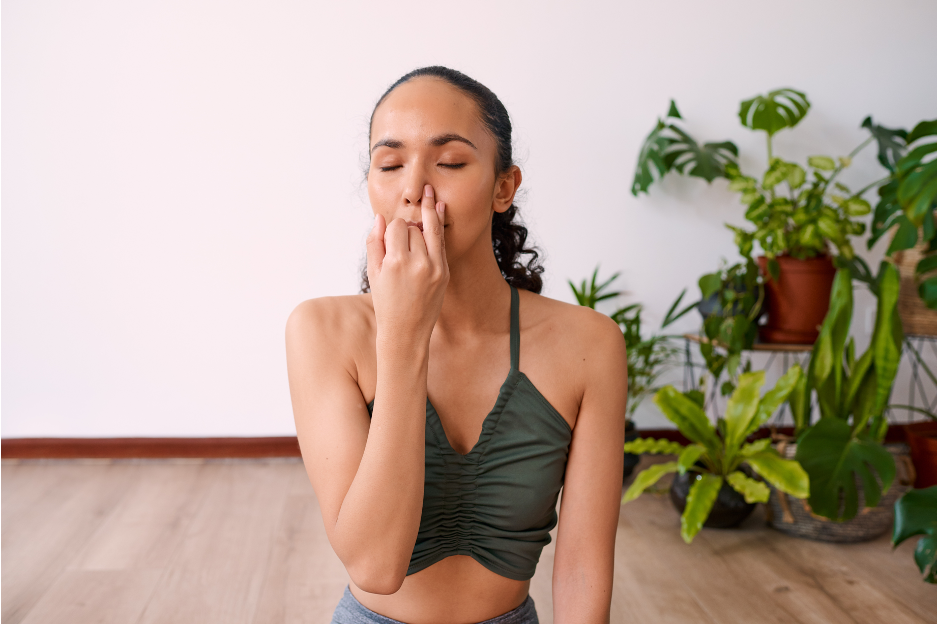
The Breath of Yoga, Respiratory Health and People living with Parkinson’s by Adam Flores, CCPA, LMT, C-IAYT, E-RYT 500
Parkinson's disease is a complex neurological condition affecting millions of people worldwide. Ayurveda, the ancient Indian system of medicine and yoga’s sister science, offers a unique perspective on this condition. While understanding all of the Sanskrit terminology is not important in order benefit from these practices, readers may find it interesting how these ancient concepts correlate to leading-edge scientific research on Parkinson’s disease.
From a Western perspective Parkinson's disease is characterized by the degeneration of dopamine-producing cells in the brain, leading to motor symptoms such as tremors, stiffness, and impaired movement. This includes movement of respiratory muscles. Pranayama and breath-work have shown promising effects on the brain function as well as musculoskeletal and respiratory health.
From an Ayurvedic lens, Parkinson’s is a a condition characterized by the vitiation or excess of the Vata Dosha (the element of Wind in the Body). Vata Dosha is one of the one of three bio-energies that are always in flux but must remain in relative balance within the body for optimal health. This imbalance can affect the nervous system and lead to symptoms like shallow breathing, reduced lung capacity, and shortness of breath. The development of breath control plays a significant role in Ayurvedic management of Parkinson's disease by promoting relaxation, mental clarity, and physical vitality.
While pranayama tends to promote relaxation, reduce stress levels, and improve overall emotional well-being by activating the body's relaxation response, it can also, optimize oxygen uptake, enhance energy levels, reduce fatigue, and support one’s life force.
Yogic breathing techniques focus on improving the function of the diaphragm and pelvic floor, increasing flexibility, tone and coordination of ancillary breathing muscles. It also improves posture and the rhythm and pattern of the breath. This increases oxygenation and proper saturation of carbon dioxide in the bloodstream, as well as reducing the risk of respiratory complications.
Pranayama and Yoga Therapy
Yoga therapy is the skillful application of yogic philosophy and techniques to support individuals working with specific conditions. From a yoga therapy perspective, we are also always looking at how the layers of our experience interplay and affect each other. The breath influences the mind and emotions by creating changes in the heart rate and pattern as well as the nervous system. Current medical research supports the importance of the Mind Body Connection in treating disease. In the Ayurvedic tradition, a person is perceived as being comprised of the physical body and multiple nonphysical layers resting on top of each other. These are called the Kosha’s or energetic sheaths. Each Kosha impacts energetically the layer above and below it. The breath body is the bridge between the physical body and the mind or emotions. So pranayama is a key element to working with any physical or psychological condition.
In yoga therapy our primary goal is not to cure a person of Parkinson’s, but rather to create supportive practices which expand consciousness. We see physical and psychological disease as both roadblocks but also opportunities for growth. Ultimately yoga is a science to offers us a pathway to freedom from suffering. While we see see the benefits in reducing physical symptoms, we also see positive changes to outlook including joy, grace, acceptance and gratitude.
In yoga we generally talk about five states of mind during waking consciousness: Kshipta (distraction), Mudha (dullness), Vikshpta (partially focused), Ekagra (sing-pointed focus), and Nirruddha (complete control over the mind). Generally, most people are wavering between distraction, dullness, and partial focus. We can develop more control of the mind through mastery of sensory awareness. In Ayurveda we call the five sensory organs the Indriyas.
People living with Parkinson’s we have an added challenge in that the senses are also being impacted by the condition. Pranayama however, can help to improve the five senses, giving the practitioner more opportunities to ground and center.
Bridging Ayurveda and Western Science
Ayurveda's principles align with modern scientific understanding of Parkinson's disease in several ways. Key concepts include:
1. Myelination: Ayurveda emphasizes the importance of healthy myelin sheaths that protect and insulate nerve fibers. Pranayama practices stimulate nerve regeneration and support myelin health, potentially alleviating Parkinson's-related motor symptoms. Specific pranayama practices such as Nadi Shodhana (alternate nostril breathing) and Bhramari (humming bee breath) can help improve nerve function and coordination.
2. Dopamine Production: Parkinson's disease involves a significant decrease in dopamine levels. Ayurveda suggests lifestyle modifications, dietary changes, and herbal remedies support dopamine production and complement conventional treatments. Pranayama practices like Kapalabhati (skull-shining breath) and Ujjayi (ocean breath) can enhance blood flow, oxygenation, and support the production of neurotransmitters like dopamine.
3. Neuromuscular Reeducation: Ayurvedic therapies such as Panchakarma (detoxification), Ayurvedic massages, physical yoga practice and herbal formulations aim to restore proper neuromuscular coordination. These therapies improve mobility, reduce stiffness, and enhance muscle strength and control. Pranayama practices like Sheetali (cooling breath) and Sheetkari (hissing breath) have a calming effect on the nervous system, promoting neuromuscular reeducation where there is otherwise rigidity and spasm.
4. Coherence: Ayurveda emphasizes maintaining coherence between mind, body, and breath. Through pranayama, individuals with Parkinson's disease can enhance their mind-body connection, reduce stress, and improve overall coherence, leading to a
better quality of life. Pranayama practices such as Dirga (three-part breath) and Nadi Shodhana (alternate nostril breathing) promote relaxation, mental focus, and harmonization of mind and body.
5. Indriyas: Ayurveda recognizes the importance of senses ("indriyas") in experiencing the world. While Parkinson's disease can negatively impact these senses, pranayama can enhance oxygenation and circulation to the brain, support the health of the indriyas, leading to improved sensory perception and overall sensory function. Specific pranayama practices like Shitali (cooling breath) and Kapalabhati (skull-shining breath) can help rejuvenate the senses and enhance their functioning.
Starting a Practice
Our approach to a pranayama and how it is incorporated into our Sadhana or “Sitting Practice” is key. In the Yoga Sutras of Patanjali, one of yoga’s principle texts, we are given the wisdom of finding the balance between Stiram (strong, steady, and stable energy) and Sukam(sweet joy, ease and flexibility). Our intention in approaching our practice should be correcting what is out of balance, and we can create this by thinking more closely about set and setting for our practice.
Pranayama practices, when combined with an understanding of the Indriyas, help restore balance to the respiratory system. Here is how we can take our sensory experience into account in order to better support the practice.
1. Hearing (Shravana): Gentle sounds, soothing music, or guided meditation during pranayama can calm the mind and facilitate deep relaxation, allowing for improved breathing patterns.
2. Touch (Sparsha): Engaging in gentle self-massage or applying warm oils to the body before practicing pranayama can enhance the sense of touch, promoting relaxation and a sense of grounding.
3. Sight (Chakshu): Practicing pranayama in a peaceful environment with soft lighting or incorporating visualizations can help calm the mind and promote focused breathing.
4. Taste (Rasa): Consuming a balanced diet based on Ayurvedic principles, which includes nourishing and respiratory-supportive foods, can positively impact the taste sense and overall respiratory health. Consulting with an Ayurvedic practitioner is always a great idea, but even pausing to really notice the taste of your food while eating mindfully is a great way to begin this journey. After a you become more aware of the different tastes in the diet, work to notice before and after your pranayama practice, which taste is dominant in the mouth.
5. Smell (Ghrana): Incorporating aromatherapy during pranayama practice can have a positive impact on the sense of smell and respiratory health. Essential oils such as eucalyptus, peppermint, or lavender can be diffused or applied topically to enhance the breath, clear the airways, and promote a sense of relaxation and well-being.
By considering the influence of the Indriyas and incorporating practices that engage each sense, pranayama becomes a more comprehensive and transformative experience. The senses are intricately connected to our breath and respiratory well-being, and by nurturing and balancing the Indriyas, we can optimize the benefits of pranayama for managing respiratory conditions related to Parkinson's disease.
Incorporating Pranayama into Daily Routine
1. Seek guidance: Consult a qualified yoga therapist experienced in working with individuals with Parkinson's disease to receive personalized guidance and support. The Parkinson’s Foundation offers many opportunities to participate in such programs.
2. Start slow: Begin with simple pranayama techniques and gradually increase the duration and complexity of the practices as you become more comfortable and experienced.
3. Create a calm environment: Find a quiet and peaceful space where you can practice pranayama without distractions. Dim the lights, play soothing music, or burn incense to create a serene ambiance.
4. Practice consistently: Aim for a regular practice, even if it's just a few minutes each day. Consistency is key to experiencing the long-term benefits of pranayama. Set aside a specific time each day and make it a non-negotiable part of your routine.
5. Listen to your body: Be mindful of any discomfort or strain during the practice. Pranayama should be gentle and comfortable. If you experience any pain or dizziness, discontinue the practice and consult a healthcare professional.
Summary: Pranayama, offers numerous benefits for individuals with Parkinson's disease and respiratory conditions, including increased lung capacity, enhanced respiratory muscle strength, stress reduction, and improved oxygenation. While scientific research on breathwork for Parkinson's disease is still evolving, the potential benefits of pranayama in improving dopamine production, motor function, nervous system regulation, myelination, and cognitive function offer hope for individuals living with Parkinson's disease. A primary goal in yoga therapy is to expand consciousness for personal development and ultimately liberation from suffering.
NAMASTE!
Resources:
1. Sharma H, Mishra S, Mehta CS, et al. Yoga as an Alternative and Complementary Approach for Stress Management: A Systematic Review. J Evid Based Complementary Altern Med. 2021;26:21565872211028602.
2. Patwardhan B, Warude D, Pushpangadan P, Bhatt N. Ayurveda and traditional Chinese medicine: a comparative overview. Evid Based Complement Alternat Med. 2005;2(4):465-473.
3. Kishore V, Gupta A, Pal PK. Understanding the molecular aspect of Parkinson's disease: An update. J Neurosci Rural Pract. 201

